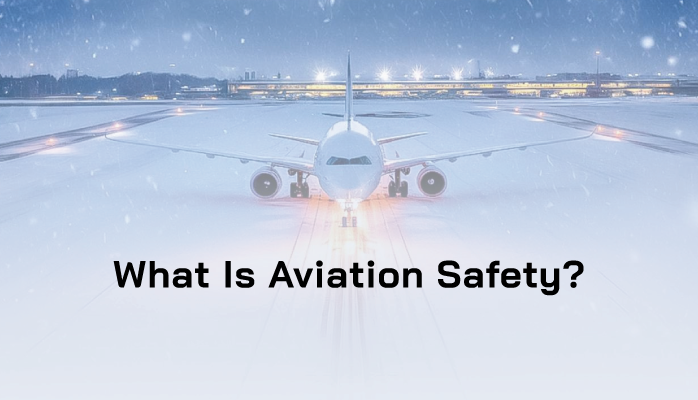Understanding Safety Terms Remains Important

We write every day about topics relating to aviation safety management systems (SMS), yet we have always taken for granted that you know what is aviation safety?
Deep down, most of us have an idea about safety. We can logically expand a safety definition to encompass the aviation industry. Yet this takes work to consider the broad implications. I've taken a few moments to discuss what is aviation safety since I've never defined it in the past.
I'm hoping to share a few insights and I am also hoping that other industry experts will expand upon this often-overlooked definition.
Related Aviation Safety Articles
- 5 Safety Management Systems Questions You Need Answers To
- QMS Programs vs Aviation Safety Management Systems (SMS)
- What Are Safety Objectives in Aviation SMS – With Examples
What Is Aviation Safety to You?
Aviation safety is the condition that affected elements are protected from hazards and risks arising in the operating environment. These affected elements may include:
- Operations personnel;
- Customers;
- Equipment;
- Environment; and
- Reputation.
Do you recognize any missing elements? Would you include administrative personnel? How do their actions influence the operating environment? Do they significantly influence your safety culture?
Aviation Safety Focuses on Hazard Identification
Aviation safety focuses on hazard identification and risk assessment with mitigation strategies to reduce risk to as low as reasonably practical (ALARP). If you are an aviation safety professional, ALARP should be very familiar to you already; however, to the layperson, ALARP may seem mysterious.
As aviation service providers' safety cultures mature, they move from a reactive risk management strategy to proactive risk management. The ultimate goal of aviation safety is for all aviation service providers to achieve the ability to predict events and be prepared to mitigate risk scenarios whenever hazards manifest themselves. This predictive ability hinges on many factors, including:
- Top management support;
- Data collection;
- Organizing data properly; and
- Ability to decipher data on a routine basis.
Have You Read
- 4 Tips to Approach Hazard Identification in Aviation SMS Programs
- What Is Hazard Identification in Aviation SMS Programs
- Safety Chart: Where to Focus Hazard Identification
Is the Aviation Industry Already Safe Enough?
Most laypersons believe the aviation industry already enjoys a high degree of safety. To an outsider or regular consumer, the aviation industry appears highly controlled and very safe.
Personnel involved in daily operations both flight and maintenance, realize that many close calls go unreported and that there is considerable opportunity to increase safety in the aviation industry. These close calls may not be close at all, but events such as:
- Poor communication between actors;
- Lost tools;
- Hangar rash; or
- Unreported damage caused by baggage handling equipment.
Who Is Responsible for Aviation Safety?

Most passengers take aviation safety for granted. They believe "somebody is always watching." This is not true.
Aviation safety is more than merely the responsibility of the aviation service providers. Since the aviation industry is an open system that is affected by many environmental variables, aviation safety is also the responsibility of:
- Governmental organizations providing oversight (civil aviation authorities);
- ICAO (International Civil Aviation Organization);
- Aircraft and parts manufacturers;
- Employees;
- Maintenance organizations;
- Fuel providers;
- Customers; and
- Related service providers.
As stated, aviation service providers operate in an open system that remains exposed to many external variables, including;
- Political;
- Legislative;
- Economic;
- Technological change;
- Weather;
- Cultural norms; and
- Vendors and suppliers.
Related Aviation Safety Accountability Articles
- Distinguishing Between Responsibility, Authority, and Accountability in Your Aviation SMS
- 5 Steps to Define Safety Accountabilities in Aviation SMS
- Best Practices for Safety Accountabilities in Aviation SMS - With Resources
Open Systems Require Highly Vigilant Monitoring
This open system requires constant monitoring to ensure that the highest levels of aviation safety can be realized. Without monitoring and a formal process to manage aviation safety, there can be no assurance that the aviation industry is safe for all stakeholders. To offer this safety assurance, ICAO mandated in November 2006 that all member states implement formal aviation safety management systems (SMS).
Most of you reading this blog understand what is aviation SMS. Or you may loosely understand what is an aviation safety management system. However, how often do you consider "What is aviation safety?" For me, this seldom happens because I'm probably like you--in the trenches living and breathing aviation safety that we seldom consider the term.
What would you add about this topic?
To reach the highest level of aviation safety, you will need proper tools to predict events before they occur and be prepared to mitigate the risk. At a bare minimum, you should have an effective Safety Reporting Solution that not only allows stakeholders to affordably report issues but also to
- Manage risk;
- Conduct investigations;
- Track corrective actions and preventive actions; and
- Quickly generate reports to analyze risk.
Here are some short videos explaining such an affordable solution.
Last updated in July 2025.






